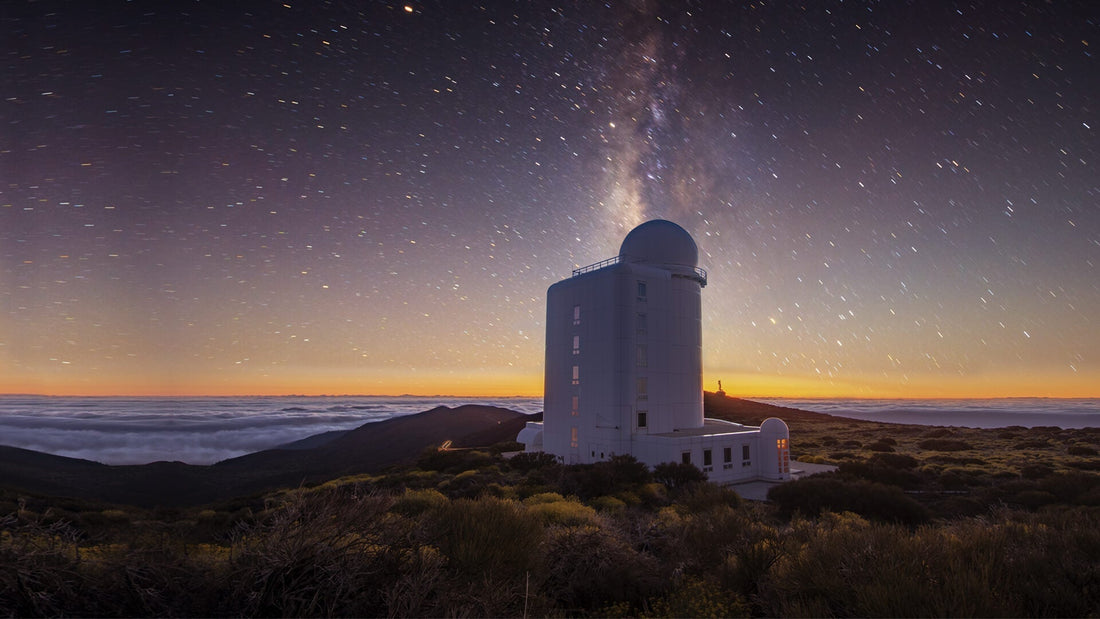Astrotourism: Best Public Observatories in the World

2020 has been a bust. Let’s just ditch planet earth and tour the stars! What do you say?
For all of you cosmic journeyers out there, we compiled a list of the best observatories that can be found all over the world.
These guys have some of the biggest and best telescopes and can be found in some of the most beautiful locations. Because after all, it’s not just stars that you’re after - it’s a whole atmospheric experience!
So, let’s check them out below. And before you book your trip, make sure to pick up a Newverest Scratch Off Map of the World so that you can plan and track your vacations with ease.
Sydney Observatory

The Sydney Observatory in Australia gives you a good view above and below. The stargazing is beautiful, but you also have a perfect view of Sydney Harbor down below, which is spectacular on its own. The Sydney Observatory has a museum and a planetarium.
It includes lots of cosmological equipment that you can observe while reading about how they work. You’ll have to reserve a slot to use one of their large telescopes, but it’s worth it. One is a more modern computer-operated telescope. The other was built in 1874, making it the oldest telescope in all of Australia.
Yerkes Observatory

The Yerkes Observatory can be found at The University of Chicago. It is considered to be “the birthplace of modern astrophysics.” It includes a 40-inch refractor telescope that you can look through.
Not only is the stargazing special, but the architecture is beautiful. It includes designs of the zodiac and moon phases. It has beautiful grounds that you can walk through as well.
Paranal Observatory

While Chile is a science hub and has quite a few observatories, Paranal Observatory is arguably the best. They are open to the public on weekends, and their famous feature is the VLT, which is short for Very Large Telescope.
The VLT is actually made up of four smaller telescopes that work together to form a super telescope. You can see things in amazing detail that would be virtually impossible to see with just one telescope, no matter the power.
Roque de los Muchachos Observatory

The Canary Islands in Spain are well-known for their stargazing sky quality. In short, it is easy to see the sky clearly here! It lures many star-lovers, both professional and amateur.
The Roque de Los Muchachos Observatory sits on the edge of a huge caldera with about 8,000 feet of elevation. They have so many telescopes here, including the largest solar telescope in all of Europe! And take it from us: gazing at the Sun is an incredible experience!
Kitt Peak National Observatory

In the Quinlan Mountains of Arizona, you’ll find a quaint little National Observatory called Kitt Peak.
They boast extreme stargazing diversity with about 22 different optical telescopes. Three of them are open to the public during their scheduled observing programs.
Mauna Kea

Mauna Kea in Hawaii gets clear skies pretty much all the time. So, you can basically always trust that you’ll see something good here. They have a multitude of telescopes stationed at various altitudes. If you don’t feel like climbing all the way to the top of the volcano, you can make some pit stops closer to the ground.
The Onizuka Center for International Astronomy Visitor Center hosts nightly stargazing programs that are free and open to the public. This includes one of those fantastic solar telescopes that we were already raving about!
La Silla Observatory

We had to add one more Chilean observatory on this list. La Silla sits at about 8,000 feet of elevation, freeing it from the light pollution of civilization down below. It also has excellent stargazing weather for most of the year.
Their famous telescope is the High Accuracy Radial Velocity Planet Searcher, which the professionals use to discover new planets outside of our solar system.
South African Astronomical Observatory

Visit the South African Astronomical Observatory to gaze through the SALT (South African Large Telescope.) It is the largest optical telescope in the entire southern hemisphere. Now, what exactly does that mean? It means that you can see objects that are a billion times smaller than what the naked eye can see. That is a really difficult number to even conceptualize.
If you visit during the day, you can go look at this telescope. At sundown, they offer two different telescopes for regular visitors that want to stargaze.
Time to level up your vacation and seek something truly out of this world! You can hit up some amazing observatories right here in the states or check out what the rest of the world has to offer.
Either way, we’re sure it will be a stellar adventure!!

